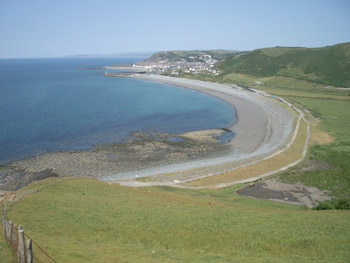
Tanybwlch Beach
Tanybwlch is a beautiful sweeping storm beach between the distinctive crested profile of Alltwen hill to the south and the confluence of the Rivers Ystwyth and Rheidol to the north.
Although it’s just a few minute’s walks from the centre of town (and even closer to where we live), it often feels strangely secluded and pristine, particularly when the weather keeps people away.
Glacially-deposited shingle forms a steep bank between the sea and the lower reach of the Ystwyth. The river’s original outlet to the sea was about halfway along the present beach but this was closed sometime in the 18th century (a map of 1809 shows its course to be roughly as it is now) and the river was redirected to join the mouth of the Rheidol at the harbour bar.
